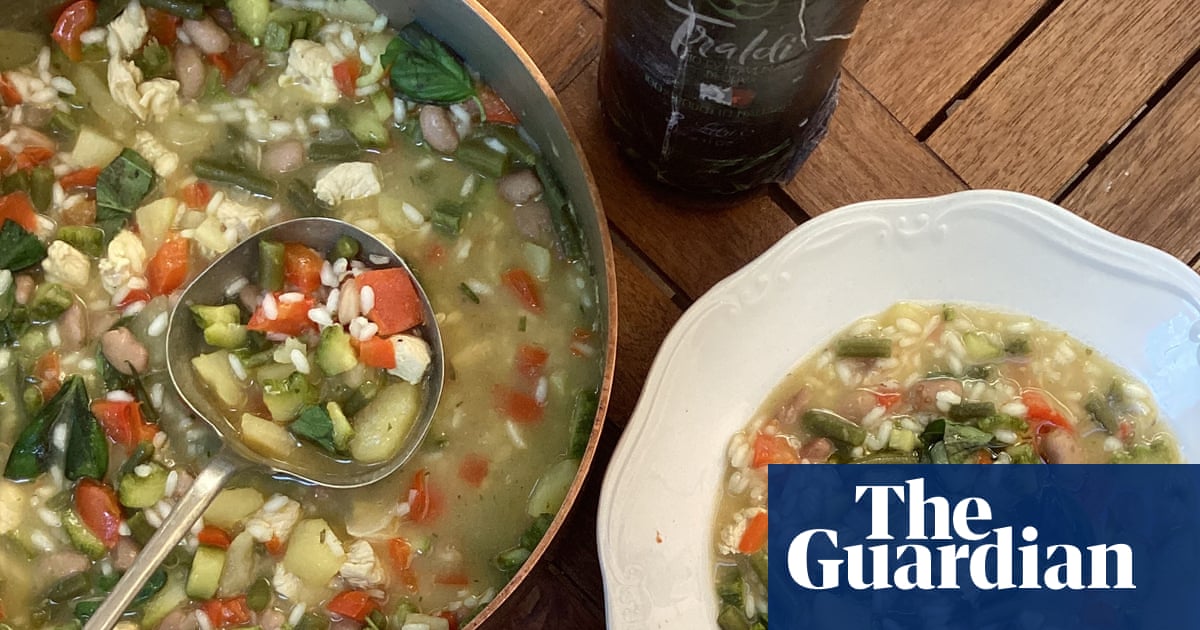
he mosquito coil smouldering away on the terrace, and scratching ice: August summed up in a smell and a sound. “If you leave it alone,” my eight-year-old tells me, “it will become a huge lolly.” He is right, but I like the scratching; the half-hourly reason to return to the freezer and take a fork to whatever liquid I have poured into a Tupperware box – lemon, melon, pear, mango, mulberry, almond – in order to make granita.
The word granita comes from the verb granire – to granulate or form into grains, to roughen up the surface. We can thank Sicilians for granita, who in turn acknowledge the Arabs, who, during their domination of the island, introduced sharbat, from the Persian “شربت”, which means a drink of sugar and water. Snow from Mount Etna and i Peloritani, a mountain range in north-east Sicily that has historically been used to cool wine, finally met sharbat and became granita (also sorbet and Roman grattachecca). It is a perfect example of how alimentary traditions never stay the same; how, as food historian Massimo Montanari notes, “they change with time, becoming modified as they come into contact with other traditions”, how identity comes from exchange; that traditions invent themselves.
In the absence of an ice-cream maker, I often put things in the freezer – whole fruit, syrups, the end of the syrup of the cherries in wine, creams in the hope that they can be scratched or blended into something roughly good. This year, though, tethered to Rome in these white-hot, stinky days, and encouraged by my son, who enjoys suspending everything – Lego, leaves, Tampax – in ice, has been the summer of frozen things. Many were familiar – lemon granita (500ml lemon juice, 500ml water and 250g sugar); coffee granita (300ml strong espresso, 200ml water and 200g sugar); watermelon granita (a litre of juice, 100g sugar and the juice of a lime); and almond granita (a litre of unsweetened almond milk, 200g sugar).
All of them follow the same procedure. Warm the liquids and sugar just enough to dissolve the sugar, pour into a shallow dish, leave to cool, then slide into the freezer. After an hour, use a fork to break down the newly formed crystals, pushing them down from the sides, and return to freezer. Repeat this process every half-hour, the initial fork swishing turning to scratching as the liquid ices and hardens.
Our favourites, though, have been new freezings. A tin of pear halves in light syrup – a taste of my childhood and a favourite of my dad’s – blitzed into a puree, frozen, then scratched. Also, tins of alphonso mango pulp – booty from wonderful, multicultural Piazza Vittorio market, treated the same way. Whether lemon, coffee, melon, almond, pear, mango or any inventive mix you chose to invent, the key to granita is attention: the half-hourly trips to the freezer for a scratch, the ideal end point being a soft, crystalline slush that you can spoon into a bowl or glass. Of course, there is always the alternative of leaving the mixture alone, simply pouring it into moulds and making lollies. Without which I wouldn’t be here, my dad having wooed my mum by pulling over the ice-cream van he was driving one summer, from which he sold Orange Maids, strawberry Mivvies and squares of ice-cream sandwiched between two wafers.
The mosquito coil was invented by a Japanese businessman called Eiichiro Ueyama in the late 1800s. Pyrethrum powder, which derives from the chrysanthemum plant, had long been use to repel insects, often mixed with sawdust. Ueyama mixed pyrethrum powder with dried orange peel and starch to make incense sticks, which his wife Yuki proposed he make thicker and form into a coil so they would last longer. The coils we buy here in Rome last about 40 minutes – 35 minutes if there is a welcome breeze, which means the smell might drift across our flat-roof terrace and into the kitchen, and possibly into the freezer as I scratch, the sound and a smell of summer cornered.












